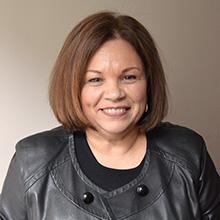The Long View on Reopening Schools
The pandemic has wreaked havoc on K-12 education. Here is how we can transform the damage into real, positive, equitable change.
By Karen Garibay-Mulattieri, Senior Educational Advisor, and Noreen Sugrue, Director of Research


Too many discussions around public policy and resource-allocation in the wake of COVID have centered around a “return to normal.” Rather than trying to get back to 2019, we must examine what has been exposed, exacerbated, and broken by the pandemic and reimagine how these institutions could be new and improved in 2022 and beyond.
Nowhere is the challenge of reimagination more pressing than in the K-12 educational arena.
The pandemic has required parents, guardians, teachers, administrators, and students to shift their concepts of where learning occurs and who is responsible for specific educational activities. This has caused a cascade of challenges in addressing the essential needs of families so that learning can be a real possibility for all.
The pandemic has done an extraordinary amount of damage to our schools and educational systems, but it has also created new opportunities for them that are worth exploring.
Educational Challenges: 2021 and Beyond
Here, we lay out some of the challenges that the future holds for K-12 education. Some of them will be driven by state and federal policies and reporting requirements. Some will force students, parents, teachers, and administrators to reckon with change. But alongside this, we can reimagine how we fund schools, set priorities, and realign with new decision makers.
We also offer questions to guide the teaching and administrative changes that would come with new funding models, as well as questions about diversity, equity, and inclusion at the decision-making table.
During the pandemic, many structural limitations of the educational system were exposed as schools closed their doors and turned to remote learning. Students did not all have the same skills to apply to online classes, nor did they have equal access to hardware and broadband. Most K-12 teachers did not have training or expertise in online education.
At the same time, parents were required to essentially become teacher aides. Their new “job,” taken on with no preparation or training, involved supporting their children in logging in to instruction, monitoring class participation, overseeing day-to-day assignments, and navigating interactions with teachers. Far too many parents were unable to navigate the myriad of software platforms or manage problems with broadband access.
With teachers, parents, and students struggling, many schools developed innovative ways to deploy technological hardware, reformat lessons, and train existing staff. School leaders and teachers were supporting a new type of parental involvement.
As students and teachers return to the classroom, remote learning will not be disappearing. The role of remote learning must be explored, with a focus on equity. We must ask: How can remote learning benefit students? How can technology benefit English Learners? How do we ensure that the digital divide is mitigated by the technological investments necessitated by COVID? How do we ensure that families and teachers are supported and not overburdened with the enhanced use of technology for educational purposes?
To create and sustain an equitable educational system, teachers need time to revisit the learning standards and curriculum. They must determine which activities are best suited to in-person versus remote learning contexts. Allocating professional development time for teachers to create meaningful lessons and resources is imperative. As society moves into a new educational landscape, educators must figure out how to involve parents in their children’s education.
Student assessment is another controversial area whose flames were fanned by the pandemic. Before COVID, more and more student assessments were being mandated. As a result, many teachers reported that instructional time was becoming compromised. Parents also began to question the level of stress placed on students from all this testing.
These shifts to online and hybrid learning also create an opportunity to reimagine how assessments can be configured to ensure accountability and provide data for school improvement, while also properly assessing learning.
Current college students entering the field of education will need a new array of skills. Their presentation skills must suit these new learning contexts. To prepare the next generation of teachers, higher-education institutions should consider how they will embed courses on pedagogy and practice.
Student-teacher relationships are a necessary ingredient for successful educational outcomes. New college-curriculum requirements must focus on establishing a trusting and open student-teacher relationship in an online context. Teachers have a unique place in the lives of children, and they often identify the social-emotional problems facing their students. The training of new teachers and the professional development of current teachers must give them the necessary skills to appropriately assess these problems in an online learning environment.
When You Start with Inequity, You Reify Inequity
School districts across Illinois differ in terms of their capacity to address the needs of their students. In 2018, Illinois implemented Evidenced-Based Funding. Costs for educating a student were recalibrated to meet the differing needs of students based on community and social demographic factors. This was to create equity across all educational programs. Using the property tax base, each school district was assessed on their ability to generate adequate funding. Based on that data, the state committed to providing additional funding to districts whose property tax revenue was lower.
While this new model was based on equity, the inequitable bias embedded in using property taxes as the foundation for school funding meant that those districts needing additional state revenue were at the mercy of the annual state budget. This funding formula created a house of cards, which was supposed to be a foundation for accelerating equity in achievement, regardless of community or income level. This house of cards is teetering as the state confronts the pressing economic needs triggered by COVID. The economic reality of Illinois, as with many states, is that COVID has dried up revenue streams that were essential to achieving equity this way.
In those districts with insufficient and often unstable property tax revenue, schools function as a social safety net for children. The pandemic exacerbated this role. Families began depending on schools for basic daily needs such as food and referral services for housing, domestic violence, and healthcare. The communities in need of a strong school social safety net are the very communities who require additional state educational funding. Moreover, a few of the severely underfunded schools are in the communities (e.g., Cicero and Waukegan) with the highest rates of morbidity and mortality due to COVID.
Also relevant are the increasing unemployment rates in communities with underfunded schools. The COVID recession has impacted lower-wage workers far more than middle or high-income workers. These underfunded schools are sitting in communities where social and economic assistance for daily living is accelerating. A short- and long-term consequence of COVID job loss is that these schools will be playing “funding catch-up” long after wealthier communities have recovered.
These conditions have created a perfect storm to burden schools and school budgets. This prohibits schools from adequately addressing the inequities of both education and the social costs of COVID. The situation demands that we reimagine how schools are supported, how schools are funded, and who must sit at the decision-making table.
In short, those making decisions about school funding and programs must include an expanded set of experts. These experts must appropriately represent those within the community so that it has as loud a voice as state officials.
Board-based community committees must be developed to include professional staff such as teachers, union leaders, principals, social workers, psychologists, and nurses. Paraprofessionals, social workers, janitors, and secretaries who directly serve families must also be invited to participate. Public-health and child-development experts, parents, economists, representatives from higher-learning institutions, and elected officials all must all weigh in with their own data and perspectives. Everyone must work together to advocate for the resources to ensure the safety, education, and well-being of all members of the community.
Some key questions towards effective, equitable decisions for all students include:
- How can we balance community expertise and educational expertise when making decisions about resource allocation?
- How will experts outside of education (such as economists, public-health experts, or child development experts) be included in decisions?
- How can local needs be assessed in a comprehensive manner?
- What metrics of equity should be implemented?
- How can a comprehensive decision-making model be implemented in a culturally appropriate, efficient, and time-sensitive manner?
A Possible Silver Lining
This challenge requires political will, thoughtful resource allocation, strong communication plans, and support for the most vulnerable families. Rather than seeing this as lost time for schools or a push to get back to where we were, we propose using COVID to reimagine the educational system. How and where children will learn—and who gets to decide how we can equitably meet the needs of children—should be COVID’s educational legacy.
